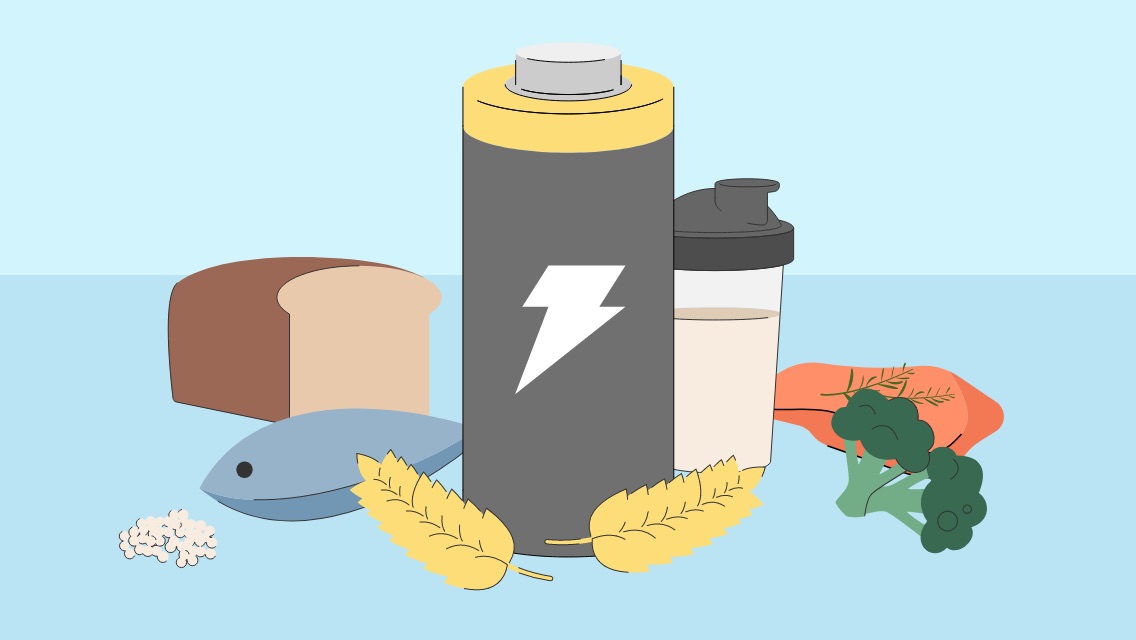Post-2020, many of us are yearning for this to be our year for health, perhaps with a desire to want to lose or keep off body fat, gain strength, reclaim energy, or increase vitality. And as you explore options for how to achieve those goals, it’s inevitable that one statement will come up:
“It boils down to calories in, calories out.”
This declaration is frequently offered as the best solution for those seeking weight loss or body composition changes. While at first glance it does sounds simple, its implications in actually achieving those goals is incredibly complex. The science behind how our bodies burn and expend calories shows there are many influential factors, including hormone balance, appetite signaling, psychology, digestive bacterial balance, and more.
One popular way to monitor calorie intake is through counting macronutrients, or macros. Some hail macro counting as the be-all, end-all to health (it doesn’t matter what you eat if your macros are right), and others ignore the concept altogether (with a focus only on consuming real, whole, unprocessed foods). It turns out that the truth about macros and fat loss lies somewhere in the middle of the two extremes.
Macros, Defined
“Macros” is short for the term “macronutrients,” which refers to nutrients that provide calories for energy; primarily proteins, fats, and carbohydrates (alcohol could be discussed here as well, but it’s not a primary focus for this article).
Proteins and carbohydrates each provide four calories per gram, and fats deliver nine calories per gram. (For those itching to know, alcohol provides seven calories per gram.)
In essence, think of macronutrients as fuel. When talking about macros, most people are either referring to the percent breakdown of their total calorie intake that comes from each of the three main categories (protein, fat, and carbohydrate) or the number of grams of each of those nutrients they are aiming to consume in a day.
Macronutrients are not to be confused with micronutrients, which are vitamins and minerals critical for health but do not directly provide calories. It might be easy to think of macronutrients as fuel and micronutrients as engine parts; you need both to function well.
Macros and Weight Loss
No bones about it: Macros do matter for fat loss, but they are far from being the sole dictator of your results.
Using the Standard American Diet (appropriately abbreviated SAD) as a starting place, most people who are embarking on a health and wellness journey usually need to increase protein intake, ideally consumed from quality meat, fish, eggs, and poultry, and purposefully focus on healthy fats such as olive oil, nuts, and seeds. Many people also initially find that they may need to decrease their intake of refined carbohydrates, such as from bread, pasta, and cereal, to get better control over their blood-sugar regulation.(And of course, there’s an almost-universal need to increase intake of colorful produce, especially from non-starchy vegetables.)
A lack of protein and healthy fats along with the consumption of excess carbohydrates (especially low fiber, processed options) can cause blood-sugar levels to roller coaster throughout the day. This contributes to sporadic energy levels, mood swings, and excess body-fat stores, making it near-impossible to maintain a caloric deficit.
Assessing your macronutrient intake and addressing imbalances between your protein, fat, and carbohydrate intake is important to nudge your metabolism into a more fat-burning state while also helping you to avoid feelings of deprivation. And it all starts with numbers.
The Numbers Game
As I mentioned above, macros are often counted in percentages of total intake or in grams. For example, someone might be following a 40 percent carbohydrate, 30 percent protein, 30 percent fat diet. Or, they may be approaching it from a gram count, for example, following a diet that aims to include 200 grams of carbohydrate, 150 grams of protein, and 67 grams of fat per day.
For those of us who don’t use the metric system on a daily basis, we might be used to ounces and pounds as units of measure, and using gram measurements may not be intuitive. If that’s you, reading food labels and leveraging online diet calculators can provide insight to the number of grams of each macronutrient you are consuming in a given meal or over the course of your day.
If you’re new to this, it may seem like a complicated foreign language. However, I promise it’s doable and can change your outlook on food.
How to Start
First, begin by using measuring cups and a food scale for a week or so to gain objective insight into how much of food groups you are currently eating. Is the chicken breast on your lunch salad 3 ounces? Five? Six? Use a food scale in the short term to learn to better eyeball it in the long term.
To be clear: The goal from a general fat loss and wellness perspective is not to get fanatical in weighing and measuring every bit of food for life (please don’t). It’s to establish your baseline.
Once you get the hang of estimating how much you’re eating in units of measure that you’re used to, input what you’re consuming into an online food tracker (e.g., a lunch salad would be entered as 2 cups of lettuce, 1/2 cup of sliced cucumber, 4.5 ounces of grilled chicken breast, and 2 tablespoons vinaigrette) that can automatically calculate how many grams of protein, fat, and carbohydrate you’re eating in that given meal.
Speaking from my clients’ experiences, just a few days of tracking this way can be a huge eye opener, especially for a few key foods that add up very quickly. See more here: 5 Foods to Weigh and Measure.
The macronutrient counts of certain restaurant portions can be particularly jaw-dropping. It will only take one time of accurately logging those takeout restaurant chips and salsa or that alfredo pasta dish to realize the magnitude of the gargantuan portions of food we are being served.
Over time, you’ll notice trends to help you better watch and adjust your intake without having to weigh and measure. For instance, you’ll notice that animal proteins tend to average around 7 grams of protein per ounce. With some experience tracking, you’ll eventually be able to easily eyeball the 4 ounces of chicken on your salad, knowing it’s likely in the ballpark of 28 grams or so of protein.
Use Protein as the Anchor
Your personal macros ought to be just that — personalized. It’s best for macro newbies to start by tracking protein.
For most people with a goal of fat loss, aiming for 30 percent of your calories to come from protein would be a good place to start. For a 2,000-calorie diet, that would be 600 calories from protein, or 150 grams of protein (since there are four calories per gram of protein).
If you’re not sure how much protein you ought to be eating and haven’t yet had the opportunity to connect with a nutrition coach, research suggests a ballpark of 1.5 to 2 grams per kilogram of body weight (much higher than the current RDA of 0.8 grams per kilogram) may be prudent. For context, a 175-pound person would be aiming for approximately 120 to 160 grams of protein daily under those guidelines.
Other research suggests that a gram of protein per pound of target body weight daily may be even better. Anecdotally, several clients of trainers and nutrition coaches have reported improvement in body-fat losses and blood work trends by using several of these strategies. (However, when you’re getting this precise, it’s highly encouraged that you connect with a nutrition professional to customize your personal plan.)
Please note that there are a lot of myths out there about the so-called dangers of protein that are misguided and may not apply to you, unless you have a preexisting kidney issue (often caused by uncontrolled high blood pressure or blood sugar).
For more in-depth information about the impacts and nuance of protein on health, see High Protein Diets: Benefits and Controversies.
What About Carbs and Fat?
While protein needs are generally consistent from day-to-day for the average gym-goer (changing primarily as body composition changes), carbohydrate and fat intake fill in the rest of one’s calorie needs.
For most, you want to base carbohydrate intake on activity level and muscle mass. Generally speaking, the more you move and sweat and the more muscle you have, the better your body tolerates and processes carbohydrates.
While there are exceptions, lower-carbohydrate approaches tend to work well for those with weight-loss goals by helping keep blood-sugar levels steady, dampen cravings, and improve satiety. This doesn’t necessarily mean you have to take a full-blown ketogenic approach, although that is certainly an option for some.
The good news is that most people who work to increase their protein intake see an organic drop in carbohydrate consumption without feeling deprived from actively restricting them.
As for fat, healthy fat choices such as nuts, seeds, and avocados should fill in the rest of your calorie needs after protein and carbs are accounted for. Because fats are the most calorie-dense macronutrients, it can be especially helpful to use measuring tools for foods high in them.
For those who are worried about saturated fat and heart disease, literature has shown that so long as it comes from natural sources, it is not as much of a concern as once thought. Read more about saturated fats here: Should I Eat Saturated Fats?
To Count or Not to Count
With the exception of a personal history of disordered eating, counting macronutrients strategically and for intermittent intervals of time is recommended for anyone looking to lose body fat and change their body composition.
Doing so not only educates you about the balance of nutrients you’re putting in your body, but also, when pairing macronutrient counting with body-fat assessments and weigh-ins over time (think four- to eight-week intervals versus day-to-day monitoring), it can reveal a whole lot about what works well for you and what does not.
That being said, nutrition is about quality, balance, and individualization. Counting and adjusting macros will only help move you toward a state of optimal health when done under the assumption that real, unprocessed foods that provide micronutrients are making up the bulk of those macronutrients. Low-carb ice cream and protein bars loaded with artificial sweeteners are low in vitamins and minerals and subsisting on them will not do your metabolism any favors — even if your macros are spot on.
Another thing to note is that counting your macros is best done when making active changes to your nutrition program. If you’ve been counting macros incessantly for months or years on end, it’s important to evaluate your personal relationship with food to make sure you’re channeling the value of intuition and satiety cues as well.
Counting macros is a great and highly recommended tool, but it’s best used like training wheels, ideally when aspects of your nutrition program are changing to help you adapt — not as a perpetual food-logging prison.
At the end of the day, awareness catalyzes change. And macro counting can be one of many aspects to a successful nutrition approach on your healthy way of life journey.





